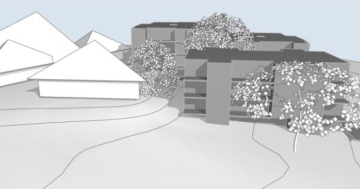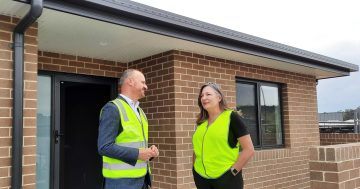
Tried to rent in Canberra recently? If so, you won’t be surprised to learn that Canberra’s rental market is extraordinarily tight. The census data reveal high median rents and the latest figures from Domain confirm it’s a story of high rents and few properties, and one that has not changed for many years.
When we talk about housing affordability, the focus is often on first home buyers and how to enable people to purchase homes. However, with home ownership becoming unattainable for many individuals and households, there is a need to urgently look at how the rental market is working for people with different needs and circumstances.
If you have a low or moderate income, finding something that is affordable to rent outside the public housing system (increasingly becoming the landlord or last resort) in Canberra is almost impossible. We judge affordability against the measure of spending no more than 30% of your income on housing – any more than this, and other essential costs such as food, transport and utilities are hard to cover. Anglicare’s Rental Affordability Snapshot that was released in April found that there were very few rental properties on the market in Canberra for people who were on low incomes. One example is a family of four that had two minimum wage incomes coming into the household. For this household type, there were only 2.3% of advertised properties that met your needs and would not put you in housing stress.
It doesn’t have to be this way. There are things that could be done locally to create and stimulate this missing part of the market – that is creating housing stock that sits between market-based private rental and public housing.
We are not going to solve this issue without addressing supply. While there are a small group of community-based housing providers that are building and renting homes that can be offered below market rent, they cannot do this at scale under the current policy settings. If we are serious about creating housing that is affordable we need to work out ways that we can deliver land more cheaply to enable the development of properties that are available for a more affordable rental than what the market currently offers. There are many ways that we could do this. One option is for the Government to provide land at discounted rates to providers who will use the land to build housing stock to be rented below market rent. Another is to create government, community, and partnerships where all parties can come together to deliver affordable rental stock.
We also need to think about where this supply is and to ensure that there are incentives in place so affordable housing can be offered in both greenfield sites and as part of urban renewal. We need to ensure that we see affordable rental options along the north and south light rail corridors so we can see employees in service and retail industries able to live close to jobs, schools, services and transport.
Design can go a long way to addressing affordability. Products can be developed that use clever design to reduce the cost of building, that create options for individuals to share accommodation without giving up independent spaces and privacy or pick up new housing trends such as tiny houses. Flexible planning needs to play its part in enabling this in a way that does not erode the integrity of streetscape.
We also need to create interest for potential investors to invest in affordable housing products. We have seen a not-for-profit real estate company established in Melbourne and there are small investors who could be interested in reasonable returns that affordable housing investment models could deliver. We know that there is work occurring nationally and hopefully there will soon be federal incentives through mechanisms such as supply bonds and tax concessions. There is a real opportunity for local planning to occur so that we can see the most of these incentives when they emerge so that we can increase the numbers of affordable rentals in the ACT.
These are just some ideas but there are many others. What do you think we need to do to ensure everyone can have a safe home in Canberra, even if they are not high-income earners?
Rebecca is a board member of Community Housing Canberra, a not-for-profit affordable housing organisation.





















